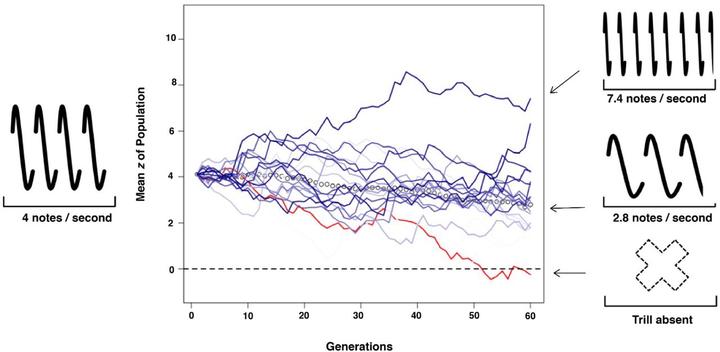
Abstract
Oscine songbirds have been an important study system for social learning, particularly because their learned songs provide an analog for human languages and music. Here, we propose a different analogy: from an evolutionary perspective, could birds’ songs change over time more like arrowheads than arias? Small improvements to a bird’s song can lead to large fitness differences for its singer, which could make songs more analogous to human tools than languages. We modify a model of human tool evolution to accommodate cultural evolution of birdsong: each song learner chooses the most skilled available tutor to emulate, and each is more likely to produce an inferior copy than a superior one. Similar to human tool evolution, our model suggests that larger populations of birds could foster improvements in song over time, even when learners restrict their pool of tutors to a subset of individuals in their social network. We also demonstrate that song elements could be simplified instead of lost after population bottlenecks if lower quality traits are easier to imitate than higher quality ones. We show that these processes could plausibly generate empirically observed patterns of song evolution for some song traits, and we make predictions about the types of song elements most likely to be lost when populations shrink. More broadly, we aim to connect the modeling approaches used in human and nonhuman systems, moving toward a cohesive theoretical framework that accounts for both cognitive and demographic processes.